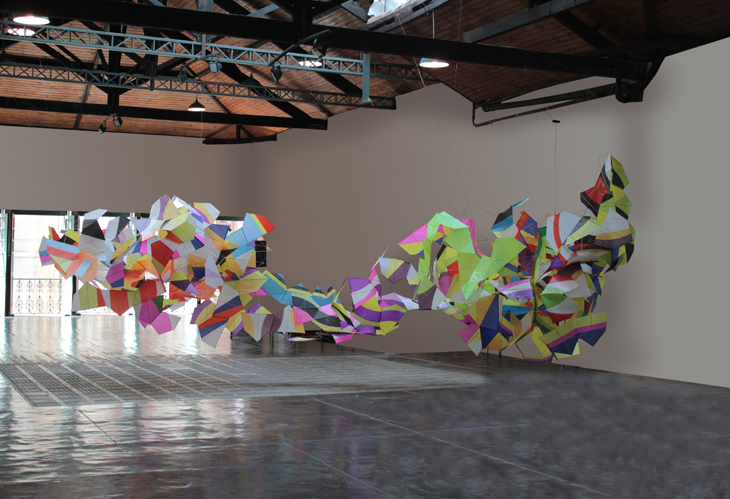
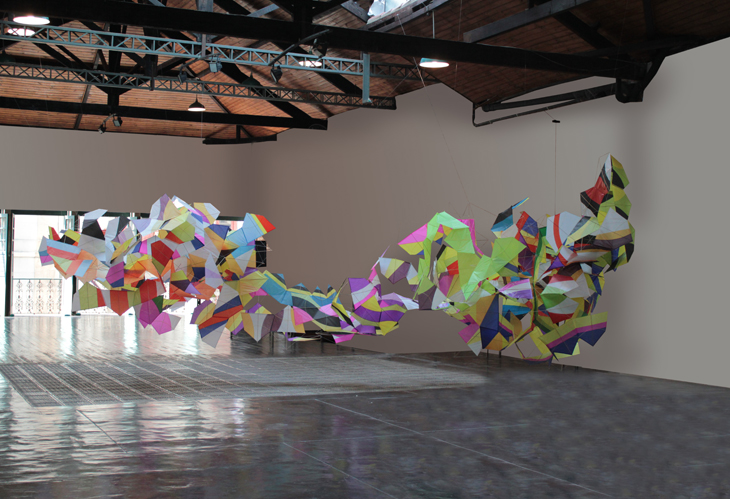
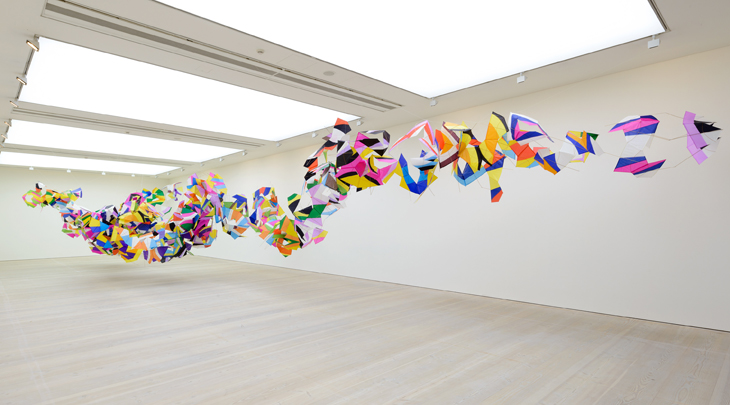
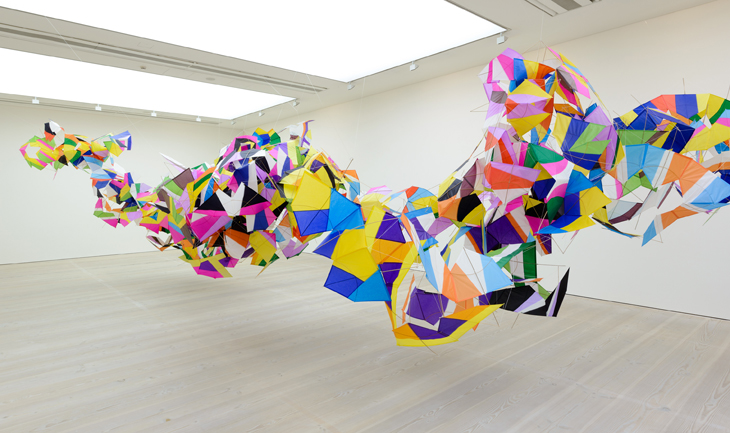
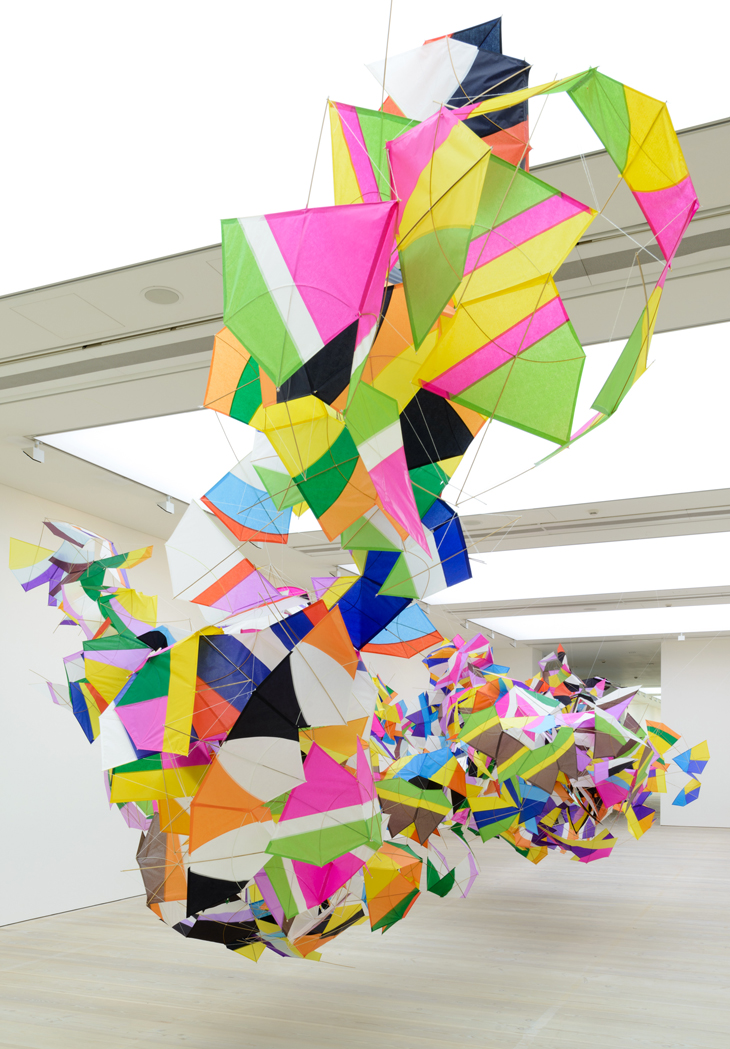
Marcelo Jácome
Marcelo Jácome’s Planos-Pipas (‘kite-planes’ in the artist’s native Portugese) treats paper as a sculptural material while retaining the dynamic and intuitive quality of a drawing. Swooping across the gallery space like a flock of disturbed parrots, the components of the piece – brightly coloured sheets of tissue paper stretched over bamboo frames, held together with cotton threads – suggest disparate components moving in semi-chaotic unity. Their faceted forms, apparently bumping against each other in perpetual motion, hint at solidity depending where you’re standing: corners meet and mimic architectural forms, or become half-roofs, almost-shelters. That glancing relationship with solid form is part of Jácome’s playful approach to three-dimensionality – his work occupies the space of drawing, sculpture and architecture without ever quite belonging in any one category. The piece seems to literally evade description, much as a kite itself does, whose true nature is only revealed at a distance, on the end of a thread. Jácome’s piece dances on the edge of things, slipping out of our grasp in a dazzling flash of colour and line.
Text by Ben Street




